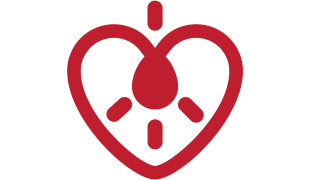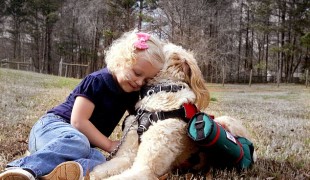- 9651
- 604
- 9
- 8
- 0
- Help Ukraine
About the solution
Rachel once was reading an article that contained an interview about an adult who was severely autistic, but who was able to communicate through typing. He was recalling his childhood when his mother would call to him from another room, and he just couldn't remember where his legs were or how to start walking. It wasn't until she came into the room and yelled at him to stand up that suddenly he remembered how to move his legs, stand up, and walk. This article inspired her to create a belt to help children with proprioceptive difficulties.
"People on the autism spectrum tend to have difficulty with proprioception (body awareness). Potty training can be especially difficult for kids on the spectrum. Sometimes they have a hard time paying attention to their bladder until it's too late", the inventor explained.
As a massage therapist, she's aware that touch can help improve and change proprioception. Her three year old son gets wrapped up in playing and doesn't want to stop in order to use the bathroom so she set about making something that would help remind him during the potty training process.
This belt doesn't potty train. It's meant to help potty training in a child with proprioceptive difficulties.
Adapted from: http://bit.ly/2iUl6iA
This solution shall not include mention to the use of drugs, chemicals or biologicals (including food); invasive devices; offensive, commercial or inherently dangerous content. This solution was not medically validated. Proceed with caution! If you have any doubts, please consult with a health professional.
DISCLAIMER: This story was written by someone who is not the author of the solution, therefore please be advised that, although it was written with the utmost respect for the innovation and the innovator, there can be some incorrect statements. If you find any errors please contact the patient Innovation team via info@patient-innovation.com
-
-
220
-
0
-
2147

Adapted and high mirror toys to encourage her daughter to put
CAREGIVING
(SELF)-CARE: GROOMING: Personal grooming, such as combing hair or shaving
STANDING UP: Standing up from a seated position
Cri du Chat Syndrome
Strategy/Tip
Restoring mobility
Promoting self-management
Preserving Organ Function
Managing Neurological Disorders
Promoting inclusivity and social integration
Maintaining Balance and Mobility
Restoring Blood Circulation
Preventing (Vaccination, Protection, Falls, Research/Mapping)
Raise awareness
Caregiving Support
Child and Adolescent Psychiatry
General and Family Medicine
Neurology
Pediatrics
Physical Medicine and Rehabilitation
Portugal
-
-
-
399
-
0
-
5358

Mother creates weighted cape to help her special needs daugther
CAREGIVING
Urban exploration
COMMUNICATION: Communicating, whether by speaking, listening, or other means
Post traumatic stress disorder (PTSD)
Anxiety
Body-Worn solutions (Clothing, accessories, shoes, sensors...)
Anxiety
Social withdrawal or isolation
Irritability or anger outbursts
Restlessness or feeling slowed down
Panic attacks
Racing thoughts
Feelings of guilt or worthlessness
Suicidal thoughts or behaviors
Obsessive thoughts or compulsive behaviors
Hallucinations (perceiving things that aren't there)
Sleep disturbances
Managing pain
Promoting self-management
Managing Neurological Disorders
Promoting inclusivity and social integration
Enhancing Mental Health
Improving Speech and Communication
To improve Treatment/Therapy
Preventing (Vaccination, Protection, Falls, Research/Mapping)
Raise awareness
Child and Adolescent Psychiatry
Neurology
Pediatrics
Physical Medicine and Rehabilitation
United States
-
-
-
592
-
0
-
8846

Parents find a dog to carry an oxygen tank for their daughter
VENTILATION
Urban exploration
Neuroendocrine Hyperplasia of Infancy (NEHI)
Pharma
Strategy/Tip
Assistive Daily Life Device (to help ADL)
Body-Worn solutions (Clothing, accessories, shoes, sensors...)
Restoring mobility
Improving respiratory function
Promoting self-management
Manage Medication
Preserving Organ Function
Managing Neurological Disorders
To improve Treatment/Therapy
Preventing (Vaccination, Protection, Falls, Research/Mapping)
Caregiving Support
Pediatrics
Physical Medicine and Rehabilitation
Pneumology
United Kingdom
-
 en
en